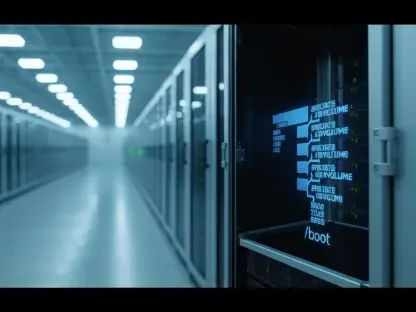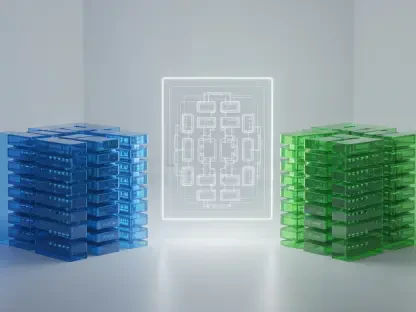Web3 applications are rapidly transforming the digital landscape, but with innovation comes the challenge of ensuring robust security. As the frontier of online interactions, financial transactions, and community engagement, Web3 faces unique vulnerabilities unlike traditional web ecosystems. Traditional penetration testing (pentesting) methods are proving inadequate for the sophisticated needs of modern Web3 environments. Uncovering and fixing security threats in dynamic, decentralized networks requires far more advanced, continuous, and scalable approaches. This article explores the limitations of these traditional methods and introduces CredShields’ cloud-based pentesting as a groundbreaking solution for the vast security challenges facing the evolving space of Web3.
Limitations of Traditional Pentesting
Traditional pentesting remains a cornerstone of cybersecurity, seeking to identify and mitigate vulnerabilities before they can be exploited. However, this resource-intensive process requires substantial time, expertise, and financial investment. Often, traditional methods focus on pinpointing individual vulnerabilities rather than offering a holistic assessment of an application’s or ecosystem’s overall security posture. This piecemeal approach proves insufficient when safeguarding the inherently complex and dynamic systems that define modern Web3 environments. Web3 applications rely heavily on blockchain technology, decentralized protocols, and complex smart contracts, which demand a more comprehensive security view.
Moreover, scalability in traditional pentesting methods is painfully limited. The procedures struggle to keep pace with the fast-paced development cycles and the swiftly evolving threat landscape endemic to Web3 applications. Relying on intermittent assessments and manual interventions makes it difficult to ensure ongoing, robust security. This leaves systems perpetually vulnerable to novel and sophisticated cyber threats that emerge almost daily. In a landscape where cybercriminals continuously innovate, relying solely on outdated, manual pentesting techniques results in significant security gaps, exposing Web3 projects to substantial financial losses and reputational damage.
Security Challenges in Web3
The Web3 community has faced significant financial losses due to security breaches. In 2024, according to SolidityScan’s Web3 HackHub, Web3 projects lost ₹10,000 crores (~$1.2 billion) from security exploits alone. Such breaches carry more than just financial repercussions; they erode trust and tarnish reputations, thereby highlighting the urgent need for more sophisticated and effective security measures. Each security failure not only represents a direct monetary loss but also undermines the credibility of Web3 platforms, diminishing user trust and slowing overall adoption. The unique aspects of Web3, like blockchain immutability and smart contract functionality, demand specialized security solutions beyond legacy infrastructures.
Cybercriminals are leveraging increasingly sophisticated attack methods to breach Web3 applications, underscoring further the inadequacy of traditional manual pentesting techniques. With tactics continuously evolving, attacks on these decentralized systems exploit nuanced vulnerabilities within smart contracts, blockchain nodes, and protocol interactions. This dynamic and intricate nature necessitates a more scalable, automated, and proactive security approach tailored to the distinct framework operating behind Web3. Identifying and securing against such threats in real time demands advanced methodologies capable of continuous adaptation and response, something traditional frameworks lack by design.
CredShields’ Cloud-Based Pentesting
To address these profound challenges, CredShields provides a cloud-based pentesting solution specifically tailored for Web3 applications. By leveraging cloud technology, CredShields offers scalable, efficient, and continuous security monitoring. Their platform automates crucial processes including vulnerability scanning, security assessments, and report generation. Automation significantly reduces the time required for comprehensive testing, enabling faster identification and remediation of potential threats. This allows cybersecurity experts to redirect their focus to high-value tasks, enhancing the overall security posture of Web3 applications.
The cloud-based approach also enables dynamic adjustments to evolving security needs without necessitating manual interventions for every new project. As Web3 applications grow and adapt, CredShields’ system can seamlessly scale to meet these changes. Leveraging cloud infrastructure, the solution is designed to handle extensive asset inventories and their associated security demands without sacrificing performance or thoroughness. This method ensures that Web3 projects remain one step ahead of cyber threats, proactively addressing vulnerabilities rather than reacting post-incident. By integrating sophisticated automation with dynamic scalability, CredShields’ solution represents a significant evolution in how security is managed within the Web3 space.
Scalability and Flexibility
One of the significant advantages of CredShields’ cloud-based solution is its inherent scalability. Web3 applications often see rapid development and massive user base growth. The ability to dynamically adjust security measures to meet these evolving needs is paramount. CredShields scales without the need for extensive manual labor, providing faster deployment and more reliable security assessments. This adaptability covers emerging threats and integrates seamlessly with various blockchain infrastructures, ensuring security does not become an afterthought but a consistent, proactive priority.
Flexibility extends beyond just the technical aspects. CredShields’ solution also offers cost-effectiveness, a critical factor for the often budget-constrained environments of many Web3 startups. Traditional pentesting necessitates substantial initial investments in hardware, cybersecurity personnel, and software licensing, making it financially unfeasible for smaller projects. In contrast, the cloud-based approach utilized by CredShields eliminates these hefty infrastructure costs, providing businesses the liberty to pay only for the services they need. This efficient allocation of resources results in an average cost reduction of up to 30% compared to traditional methods, making robust security accessible to a broader spectrum of projects.
Continuous Monitoring
Continuous security monitoring stands as a key pillar of cloud-based pentesting. Unlike periodic assessments, continuous monitoring allows for instantaneous detection and remediation of emerging threats. CredShields achieves this through real-time analysis, keeping security practices in step with ongoing developments within the application environment. This proactive stance ensures vulnerabilities are addressed before they can be exploited, significantly reducing the occurrence and impact of potential security breaches. It provides a safeguard that is consistently active, adapting to new threats almost as they appear, rather than waiting for the next scheduled manual check.
The platform’s capabilities are further enhanced through the integration of artificial intelligence (AI) and machine learning technologies. By leveraging these advanced technologies, CredShields can analyze vast datasets to uncover deep-layer vulnerabilities that might elude even the most thorough manual audits. Machine learning algorithms enhance the precision and scope of security assessments, detecting complex threat patterns and anomalous activities across blockchain networks. This improves the thoroughness and accuracy of the security landscapes, ensuring nothing is left to chance, and reinforcing the overall resilience of Web3 applications against evolving cyber threats.
Future Trends in Web3 Security
Web3 applications are swiftly transforming the digital landscape, and innovation brings the challenge of ensuring robust security. Serving as the pioneering platform for online interactions, financial transactions, and community engagement, Web3 is subject to unique vulnerabilities far different from those in traditional web ecosystems. Traditional penetration testing (pentesting) techniques fall short in addressing the sophisticated needs of the modern Web3 environment. Detecting and addressing security threats in these dynamic, decentralized networks necessitates more advanced, ongoing, and scalable approaches. This article delves into the limitations of conventional methods and presents CredShields’ cloud-based pentesting as a pioneering solution. CredShields’ approach is tailored to meet the extensive security challenges of the evolving Web3 space, ensuring comprehensive protection within this innovative landscape.









